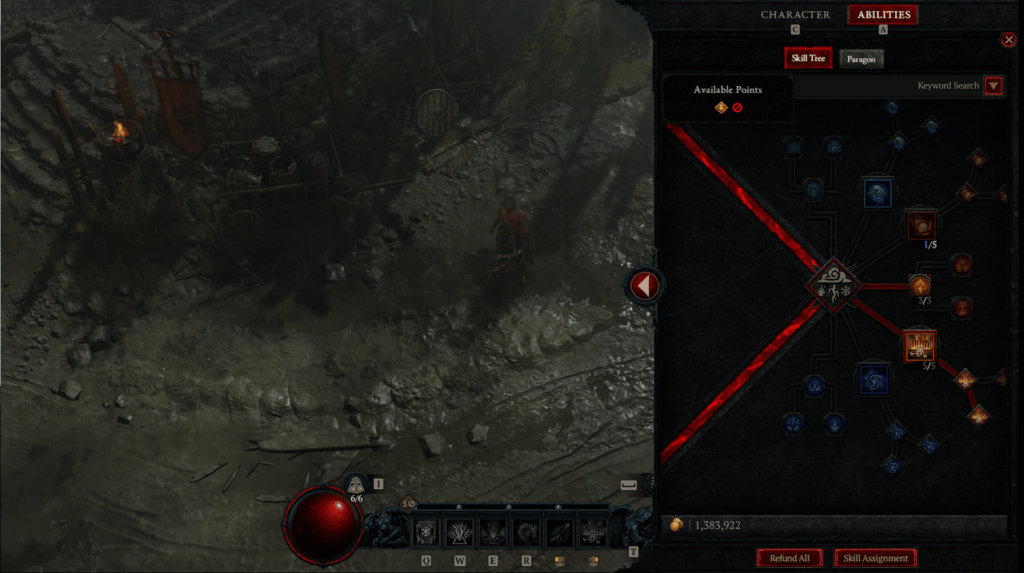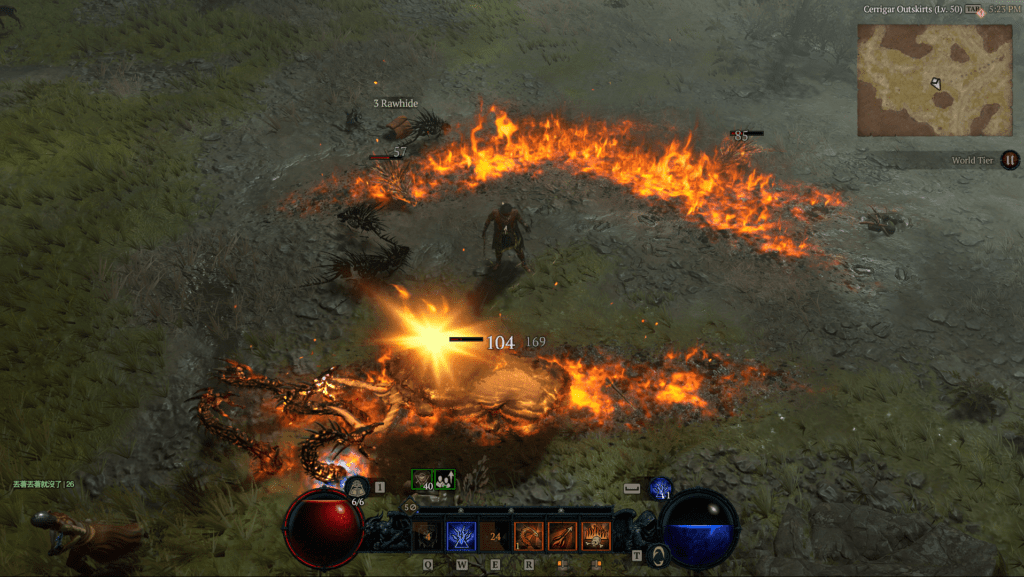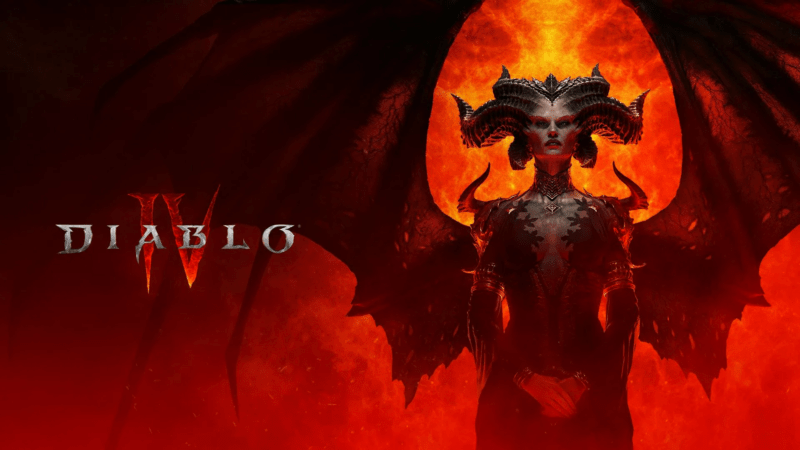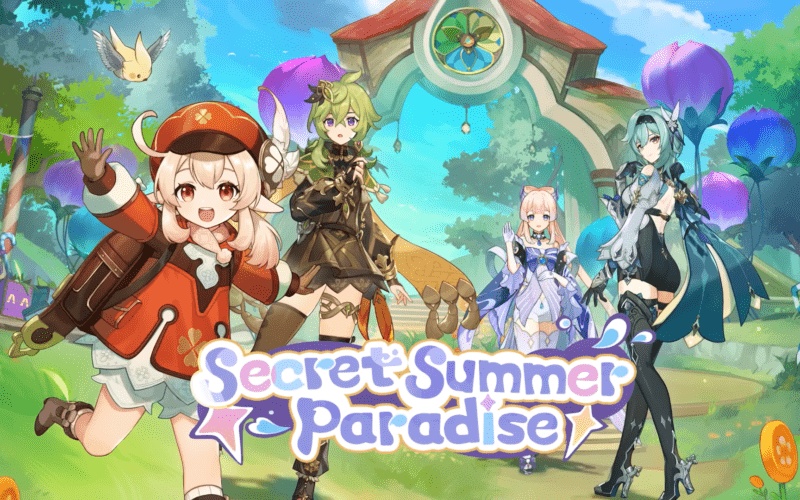It has been two weeks since the international release of Diablo IV, the next chapter in Blizzard Activision’s leading game series. I for one have been playing the game expansively, to finish the story as well as experience the game as much as I can, before writing this review. I finally reached the “End Game” a few days ago and got to play the Nightmare Dungeons as well as the other features. My time right now has been torn between the game, working, and Honkai: Star Rail which luckily has no new updates.
I have been a fan of Diablo since the heyday of Western RPGs, but unfortunately my first foray into the genre was with Diablo II around the year 2000. I was introduced to the game by a good friend of mine when we argued between Western RPGs versus Japanese RPGs. After trying out Diablo II, I too fell into the hell pit of Western RPGs trying to loot the best items for my character build. I eventually did play Diablo and then Diablo III when it was released in 2012, but it never felt the same as Diablo II.
The Game
Diablo IV re-introduces the story that was first familiarized in Diablo II, the creation of Sanctuary, the world of Diablo, by the archangel Inarius and the child of hatred, Lilith. Once captured and imprisoned, Lilith is now free to roam the world of Sanctuary and we, the hero, must follow her footsteps to find out and end her plans, stopping the doom of the world of Sanctuary. The hero, like the previous games, is a mysterious wanderer or mercenary but this time with a bit more backstory and setup. Diablo IV however comes with 6 Acts, unlike Diablo II and Diablo III that only came with 4 Acts with the base game.
Unlike the previous games, however, the Act structure this time differs greatly, where instead of dividing the story into different maps that loads and reveals as the story goes on, the map of Diablo IV is fully available from the start of the game. The Act structure in Diablo IV is divided into two parts where the first 3 Acts are readily available on the map, and can be done in non-sequential order, as long as they are done before the second half. Furthermore, the map for Diablo IV can be explored from the get go, except for some areas locked behind story content.

Like most Western RPGs, Diablo IV’s gameplay starts with character creation and choosing 1 out of 5 Classes, each with their distinct abilities and stats. Though the character creation details are a little limited, there are quite a range of things to change and edit that make each character distinct from one another. The gameplay for Diablo IV is point and click where moving, questing, and combat uses the mouse button and a few shortcut keys, similar to its previous entry. Unlike the previous games though, Diablo IV introduces a dodge button using the spacebar and a mount to travel through the large fixed maps faster.
What makes Diablo enticing as a franchise is the looting system where killing monsters produces weapons, equipment and items that strengthens the players. Each weapon, equipment and loot has different “stat rolls” that pull from a pool of stats and abilities, thus it is very unlikely that you will find two items of the same nature. This looting system is one the end game features that tempts players to keep playing as they find the best item for their character build.
What do I like?
The first thing I noticed was that it is better and more expansive than Diablo II in terms of gameplay, skill tree and story. Although I played Diablo III extensively, the game did not offer what Diablo II offered in terms or replayability when it comes to the classes and skill trees. In Diablo IV, the skill tree is back to the old school style with some modern novelties, where to unlock better skills, certain number of skill points have to be spent.
This way, you can even skip some skills that do not fit your build by investing skill points in previous skills, yet unlock skills further down the tree. No more are the days where you have to waste a single skill point on a skill you do not need just to unlock a skill you want. Additionally, respecting skills has become easier with only needing gold to reset the Skill Tree, thus there is no need to create a new character with the same class.

The world map of Diablo IV is massive with tons of dungeons to explore, sub-quests to accept, pillars of Lilith to discover, and strongholds to conquer. The game is like a mini MMORPG akin to World of Warcraft or Final Fantasy XIV where there is a massive map with players running around to complete quests, find loot, and explore the map. Even without the online players that you meet at town squares or the plains, the NPCs roam around fighting monsters or giving out world quests that you can complete to earn loot and currencies. The World of Diablo IV seems alive and you are not just running around completing tasks, but also discovering the world of Sanctuary.
There is also an overhaul to the Unique items of Diablo where previously, unique items provided unique skills that alter your class skills, but is tied to the item; so the item may contain the unique skill that you want but a bad “Stat Roll”, thus forcing the player to grind for that specific item over and over again to get the item with the “Stat Roll” that you want. In Diablo IV, however, you can extract the unique skill from the item to be imprinted into the item with the “Stat Roll” that you want, thus customizing you build the way you want. This alters the end game of finding not only the Unique Skill for your build but also finding the perfect item to imprint, instead of farming again and again for the same item.

The story is also back to the old lore of Sanctuary, of good against evil, Lilith against Inarius, with twists and turns that you can enjoy along your journey. The story finally moves forward instead of rehashing the same lore again and again like in Diablo III. The Act storylines aren’t the only lore that you can find, as you are able to piece together a lot of lore from item descriptions, sub-quests, exploring the map, and even delving into dungeons. The voyage into Sanctuary is truly an exploration as the player is able to find titbits of lore here and there if they look for it.
A new feature in Diablo IV is also a rework of an old feature, the World Tier system which is basically the difficulty setting of the game. The World Tier system is divided into 4 which is Adventurer, Veteran, Nightmare and Torment, with players being able to switch into the World Tier they want to at any city centre. The higher the World Tier, the better the loot with some items only appear in higher World Tiers.

What don’t I like?
Frankly not a lot, as the game surprisingly did very well in every aspect of this early release except for some minor concerns. One of the concerns is that the server does lag a lot, and being an always-online game, there are times when the internet falters and you can die from lagging. This might not be a problem if you play normally in softcore, but if you ever decide to play hardcore where your character is deleted from the account if it dies, then a better internet connection is recommended. There are a few times where the lag does cause longer load times either when signing into the game or entering the dungeons but nothing too apparent.
The next thing is the design and graphics of top-down view RPGs has started to really show its age. The game could have come out 10 years ago and would not be any different from it coming out this year ,as there is no obvious innovation either in the game graphics, system, or gameplay. There are a lot of games that fall under the same genre and what makes Diablo IV different from the other games is that it is the Diablo franchise. I would have loved if Blizzard Activision innovated in some way the gameplay, replayability or item looting system. Unfortunately, in terms of gameplay, Diablo IV is the same as any other Western RPGs that have come out in the last decade.

Lastly, a complaint rather than a concern, mount unlocking only becomes available to the player at the start of Act 4 of the game. As I have mentioned, the map is massive and other than being able to teleport to certain towns or cities, traversing across the map to get to quest points and dungeon takes a lot of the player’s time. Thus, it has become the top tip for beginners to rush through the first 3 Acts to get the mount before exploring the map, which defeats the purpose of the massive map. I would have loved if the mount unlocked at the start of the game in Act 1 to be able to start the exploring straight away.
The Verdict: 10/10
Overall, I absolutely love the game and nothing can beat Blizzard Activision’s story telling in their Diablo franchise. Although for now I am content in finishing the game and playing the end game, I cannot wait to restart the game and explore the other character classes. The game also promises Seasons with new items and gameplay that the players can explore, so I can’t wait for them. I give the game a whopping 10 pies out of 10 pies and hopefully stays that way for time to come.












